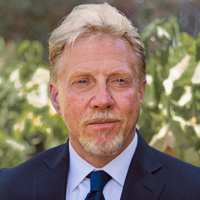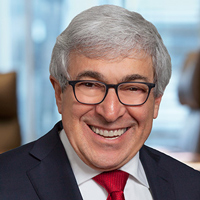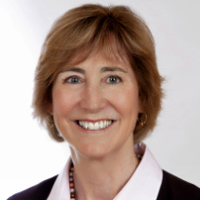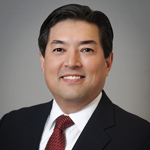It’s no surprise that value, technology, healthcare costs, patient engagement, and communication are top of mind for these executives. Take a look.
 Mark Hineser
Mark Hineser
Owner, Eco Sound Medical Services, and HIDA Board Chair
What are your firm’s most pressing challenges and opportunities for 2020 and beyond?
As a distributor; value is directly associated with margin, and what was once a priority or expectation of “service” has changed across the evolving continuum of care. This change/challenge provides an opportunity to build new relationships and grow business. As a distributor, you must have a clear understanding of the priorities and value of the next generation or be left behind.
In 2020 and beyond I believe there will be a strong focus on clean technology in healthcare. We will be asked to address the climate crisis and healthcare providers likely will be required or mandated to make this global commitment.
How are these challenges and opportunities affecting your business decisions?
There will be a need to make small technology shifts; to collect more information for providers, which are more focused and resident/patient specific. There also will be a need to look at transformations of logistics and the overall approach we use to market to the new consumers. We have to realize that different forms of transparency are inevitable to the future outcomes of continued growth and sustainability.
 Stanley M. Bergman
Stanley M. Bergman
Chairman of the Board and CEO, Henry Schein, Inc.
What are your most pressing challenges and opportunities for 2020 and beyond?
As U.S. healthcare costs are nearly 18% of the GDP, this remains the most pressing challenge for all of us within the healthcare ecosystem. As a business, we focus on supporting the Quad Aim, which calls for reducing costs, improving outcomes, and improving the experience for the clinician and the patient. One of the largest opportunities we have as a nonacute distributor is related to the outpatient procedure shift in the U.S. market. The Advisory Board projects that outpatient procedure growth will outpace inpatient procedures through 2025. will continue to be drivers of increasing adoption of convenient care models. Our portfolio is transforming to include telemedicine, patient communication, and patient engagement solutions to help providers navigate this change in care delivery. Finally, we have recognized, as have many, that oral health is connected to total health.
How are these challenges and opportunities affecting your business decisions?
Our strategic plan points toward a vision to help improve outcomes. This guides our business decisions as we navigate the challenges and opportunities. The outpatient growth opportunity has inspired Henry Schein Medical to continue development of solutions beyond non-acute distribution. We continue to recognize the need to innovate to help solve new and different challenges, including patient loyalty, provider burnout, reimbursement changes, and more. Emerging provider needs led us to develop a SolutionsHub, which offers providers clinical, financial, and operational solutions.
Regarding care delivery, we are invested in the continuum of care. This includes our investment in a telemedicine platform that optimizes care delivery and maximizes patient management throughout the continuum of care. Additionally, we have invested in our ambulatory surgery center business, dialysis, EMS, and emergency medical products, most recently, through our acquisition of North American Rescue. This investment demonstrates our commitment to care delivery outside of the four walls of the hospital and paves the way for new market opportunities.
 Anne Marie Johnson
Anne Marie Johnson
President & CEO, Claflin
What are your firm’s most pressing challenges and opportunities for 2020 and beyond?
The use of technology and promoting efficiency with consolidation of supply chain activities through distribution continues to be an opportunity. There is ample opportunity to bring additional value on non-clinical activities through data analysis and value added programs. Also, as healthcare systems expand to multi-facility healthcare networks, they are challenged with supply chain considerations that are standard to distributors. It’s what we do. The pressures on our current healthcare providers to give exceptional care with diminishing reimbursement has caused financial stress that can lead to chaotic business development. The certainty of political pressures for a more transparent healthcare payment system will focus providers’ concerns on quality and bolster the economy. We can’t be successful unless our healthcare providers are successful.
How are these challenges and opportunities affecting your business decisions?
Good business decisions are consistently made by analyzing short and long term trends, opportunities, and calculating probability and risk. Political and financial uncertainties can cause chaos which causes challenges.
 Craig Miller
Craig Miller
Vice President, Turenne PharMedCo Medical Supply Services
What are your firm’s most pressing challenges and opportunities for 2020 and beyond?
The continued merger and acquisitions activity, market consolidation, the lack of local independent players, and the level of complexity our customers face in providing (and getting paid for providing) good healthcare are all challenges and opportunities.
How are these challenges and opportunities affecting your business decisions?
We are rising to these challenges by treating them as opportunities to learn, innovate, and grow. We have created new marketing and sales strategies. We have developed new programs and technology, and most importantly, we are providing our products and services in a “hands-on”, solutions–oriented model.
 Matt Rowan
Matt Rowan
President & CEO, HIDA
What are your firm’s most pressing challenges and opportunities for 2020 and beyond?
HIDA’s imperative is to help our members to anticipate, understand, and navigate change. In lobbying and advocacy, we will stay focused on our policy agenda while being ready and flexible for the unexpected. In recent years, HIDA’s policy agenda has expanded beyond core healthcare issues to include pandemic/emergency preparedness, trade, tax, and federal procurement. Our lobbyists are on Capitol Hill advocating for our members’ interests by elevating policymakers’ understanding of the healthcare supply chain. In business intelligence, our opportunity is to continually advance as a strategic resource in market data, statistics, and information that informs our members’ go-to-market decisions. We will continue to help our members add value to their customers in the midst of fundamental market shifts such as care migrating to the home and procedure shift to outpatient settings.
We are also pursuing a “big tent” strategy in networking and events by bringing stakeholders together from across the supply chain in our Healthcare Supply Chain Collaborative Conferences. The Collaborative provides a unique value as it establishes best practices to address chronic industry pain points in contract administration and demand planning. At our Streamlining Healthcare Expo we are adding more GPOs and IDNs. The goal is to make it the B2B event where suppliers can access markets across the care continuum through unmatched networking opportunities with their key trading partners and customers.
How are these challenges and opportunities affecting your business decisions?
HIDA focuses our resources on what is most important to distributors and manufacturers. As the industry’s trade association, we are focused on continually refining our product and service offerings. That can mean paring back certain products, refining others or adding new program innovations as dictated by our customers’ needs.
What Trends Surprised You In 2019 And Why?
 Mark Hineser
Mark Hineser
Owner, Eco Sound Medical Services, and HIDA Board Chair
One trend that is surprising to me is the slow adoption or implementation of true value based or patient centered programs, throughout the care continuum. If one makes health informative technology an investment priority they would see the direct effect it has on reducing operation costs. It has been my experience that a wait and see attitude is always proceeded by risk, and that reward is not far behind.
 Stanley M. Bergman
Stanley M. Bergman
Chairman of the Board and CEO, Henry Schein, Inc.
The healthcare landscape continues to rapidly evolve with the advent of new medical devices and care delivery models. Earlier this year, the Centers for Medicare & Medicaid Services released the 2020 Proposed Medicare Payment Rule proposing the addition of eight codes to the ASC-payable list, including total knee arthroplasty. Adding total knees for Medicare reimbursement represents a major advancement for the ASC industry and further solidifies the continued shift of procedures away from the acute setting to the non-acute. We continue to be amazed at the procedure advancements that can lead to faster diagnosis and recovery times for patients. In 2019, the healthcare industry also faced a dual challenge – under-utilization of oral health services and lack of coordinated care between oral health providers and other medical disciplines.
Oral health is critical in advancing wellness and prevention, and it is critical in the fight to reduce non communicable diseases, which is critical to reducing the cost of heal hcare and improving the general health of the public. For change to occur, we need dental and medical teams workingtogether to ensure the health of the whole patient. We also need these teams working together to achieve the interoperability of electronic medical records – dental and medical. The combination of these efforts will result in a more empowered patient driven by technology advances and accessibility of information.
 Anne Marie Johnson
Anne Marie Johnson
President & CEO, Claflin
Supply chain disruptions have been unprecedented with some caused by unanticipated acts of God. The ripple effect caused much needed re-evaluation of emergency preparedness with heightened attention on the importance of the supply chain.
 Craig Miller
Craig Miller
Vice President, Turenne PharMedCo Medical Supply Services
There’s always demands for healthcare to do more with less and 2019 was no different.
Executive Briefing | November/December 2019